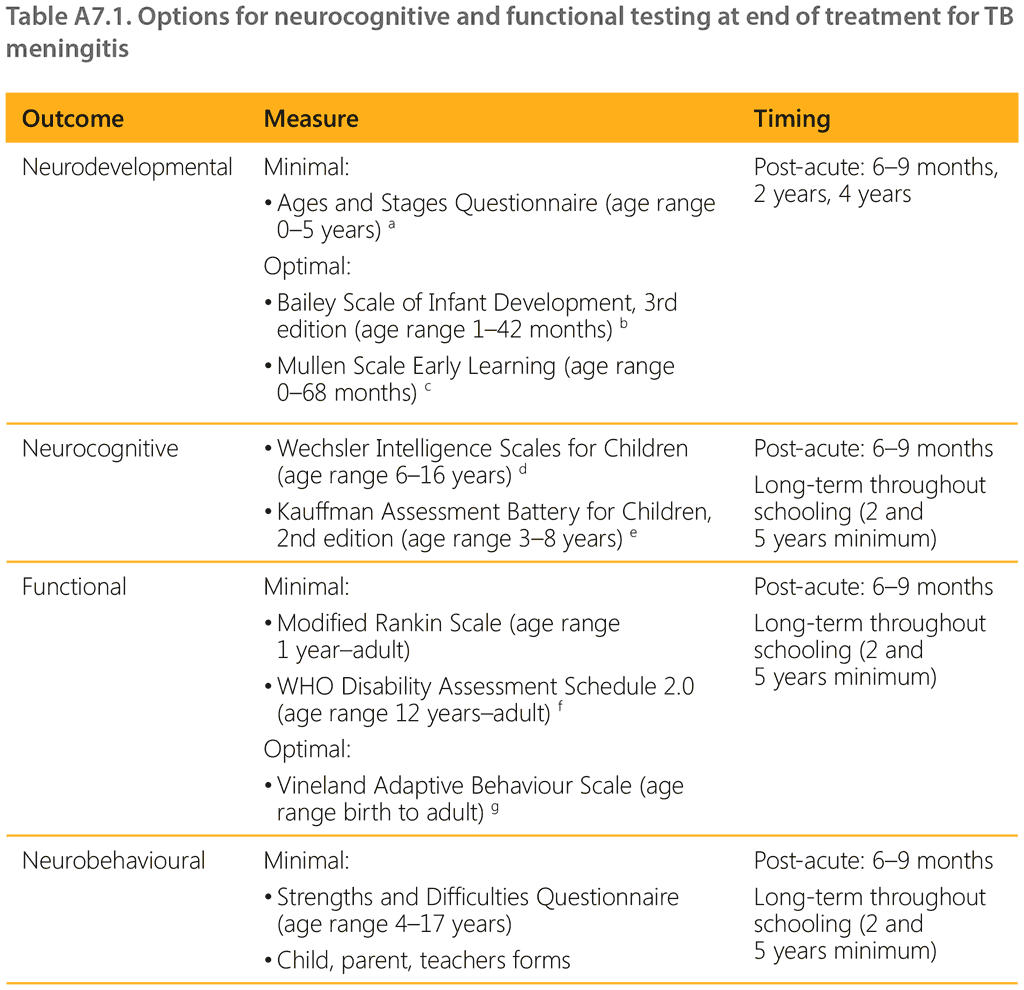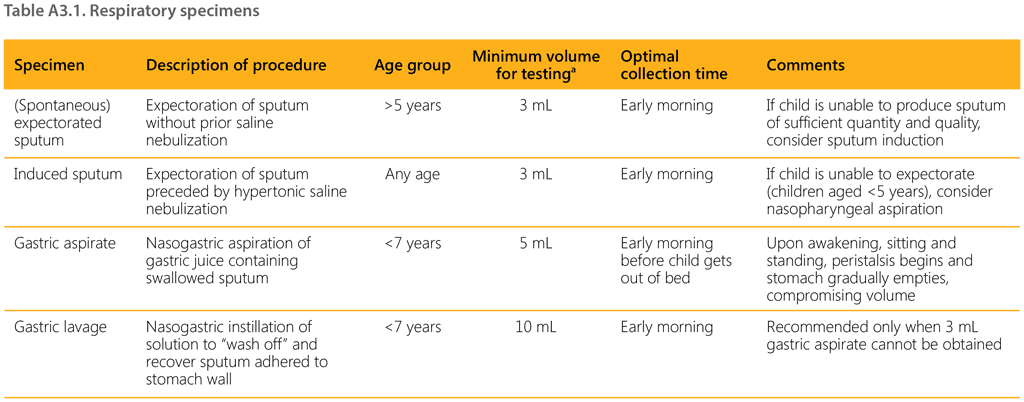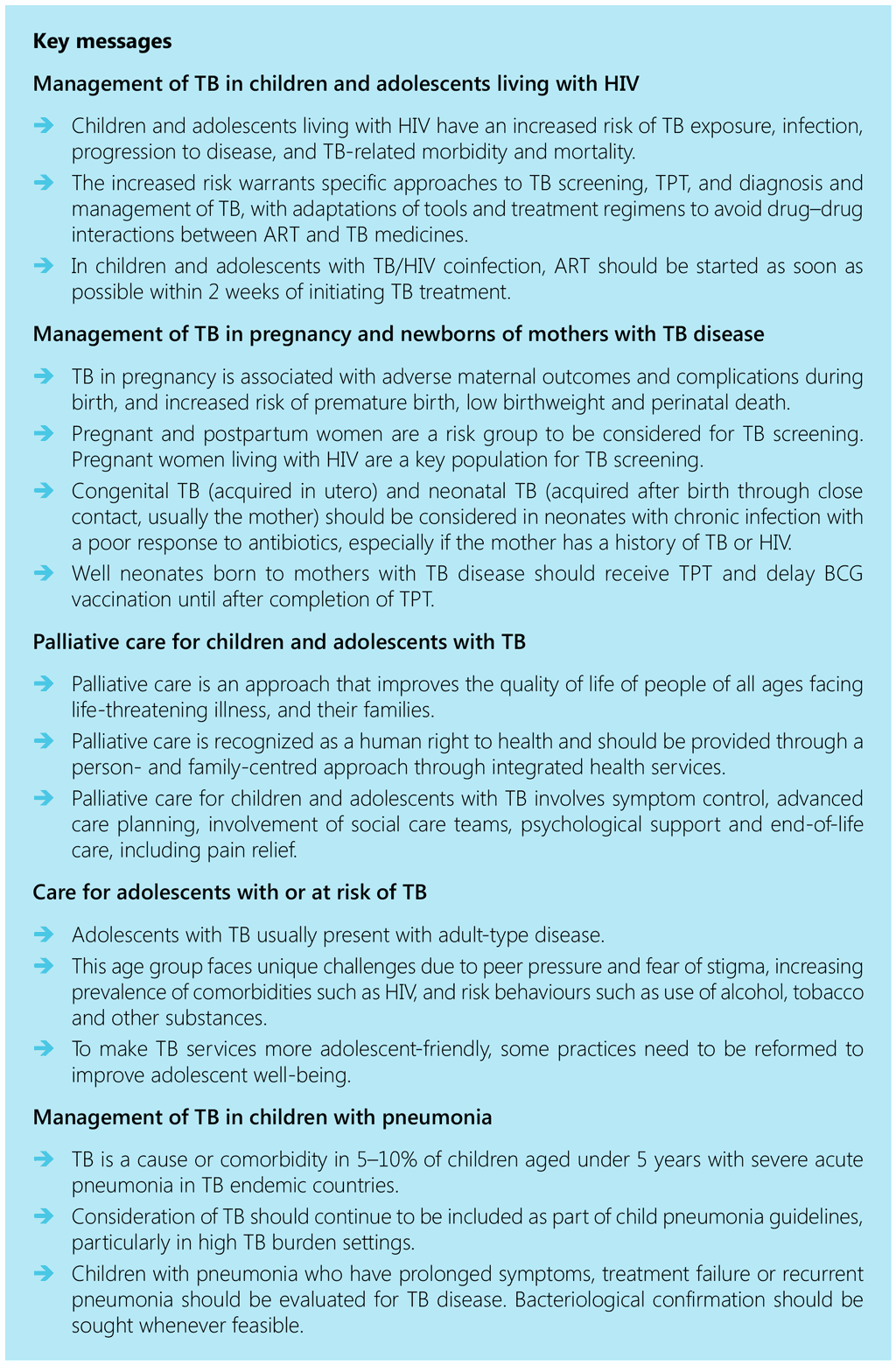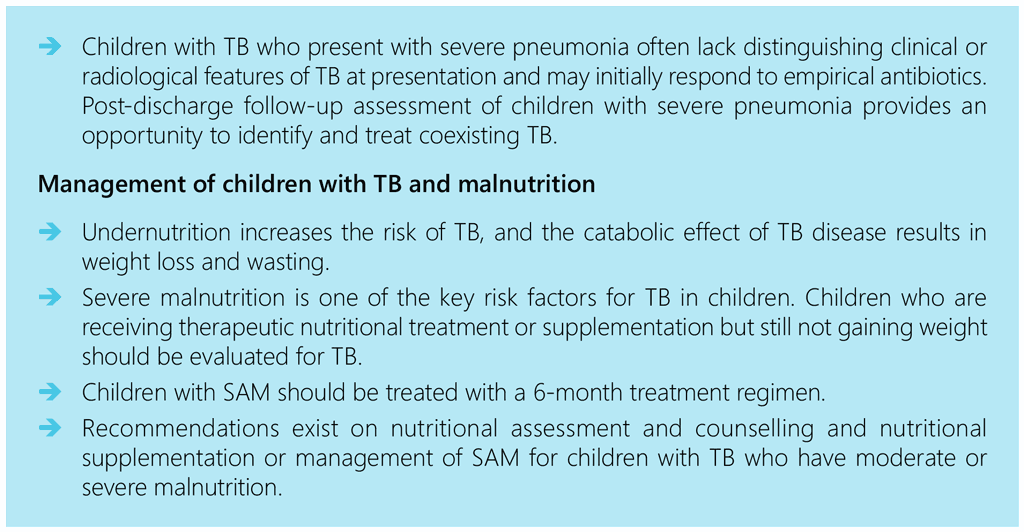Annex 7. Overview of options for neurocognitive and functional testing at end of treatment for TB meningitis

Note: these developmental assessment tools have not been formally adapted for use in low- and middle-income countries, and locally determined norms have not been developed. Interpretation of results requires careful consideration of the local context. A number of in-country locally developed screening tools are also available.

 Feedback
Feedback

